Optimizing Landing Pages for Startup Success
Increase the success of start-ups with Conversion Rate Optimization (CRO). Optimize landing pages...
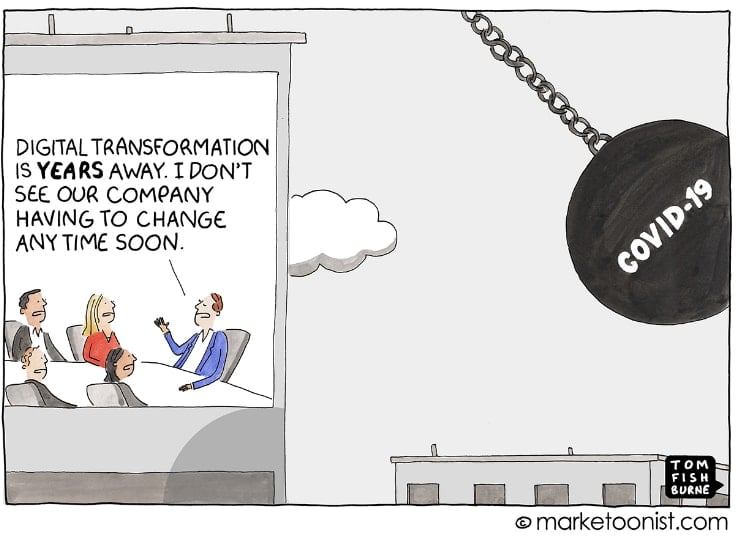
In business matters, I’ll keep it short on Corona, as there are lots to read on it anywhere on the web. I wanted to share this cartoon though if you haven’t already seen it:
And suggest taking a look at this presentation (pdf) from Vodafone to see how they are transforming their business (pdf). Very interesting.
In times like these, McKinsey suggests that leaders should act with deliberate calm and bounded optimism. Lots of what McKinsey writes about here can be found in meditation practice too, but please do have a read.
For Ecommerce under lockdown, I have seen CPMs and CPCs (=costs) decrease, as people flock to the platforms. This does, however, not always translate into conversion rates, as some just seem to be browsing around.
The opportunity is about reaching first-time shoppers for not-too-obvious online verticals and convincing these to stick around after Corona. Retail easily converts to online byways of logistics and unit economics, but it’s much harder to translate service, discovery, and curation. To help with this, Shopify is moving up the stack and launching Shop, a consumer shopping app with product recommendations from Shopify stores, the ability to follow store profiles, topped off with Shopify’s own Shop Pay checkout. Great timing but does it make sense to consumers?
Pinterest, among others, seems to have its moment:
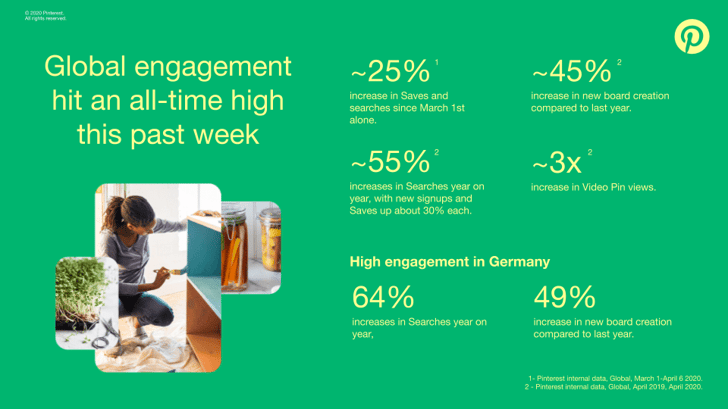
And is releasing a today-tab for daily inspiration, with which they are trying to keep users coming back daily. Different from Facebook/Instagram, Pinterest doesn’t have as many monthly users coming back daily so obviously, they would want to change that. They are beefing up their unique board feature too, with notes, dates, and some auto-functions, and last but not least launching Pinterest Partners, to help advertisers get up to speed on the platform for content, shopping, creatives, ads. Launch partners from those I’ve worked with, in the past include Smartly, Productsup, Hootsuite, Olapic, and Salesforce to name a few.
As for Olapic, I’ve recently worked with them to source UGC product shots from Instagram to test these against regular white-background product shots. For this, we created a Google Sheet as a product feed and replaced all images of the top 20 products with UGC product shots. In an A/B-test, the UGC feed achieved about twice the ROAS. The only parameter we changed was the image, mind you. And now we’d only need to add the remaining 3,000 products to the Google Sheet 😅
If you are not so fortunate as to have Instagrammable products, there is Smartly to help you out with its glorious templating feature. See how you can combine assets and product feed data into good-looking, on-brand product videos (more here):
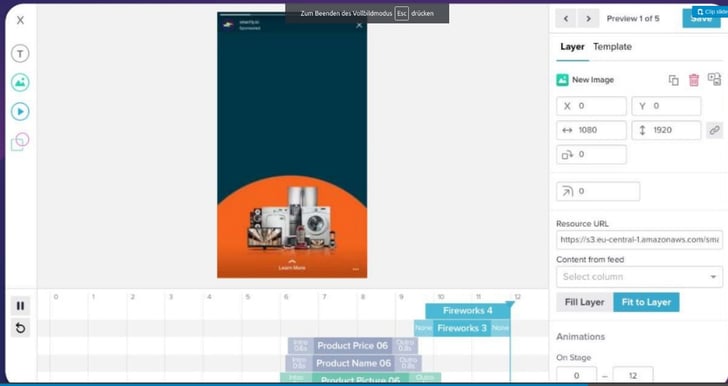
À propos brand: Can you build a brand on social media? This presentation tells you how and this is my favourite slide:
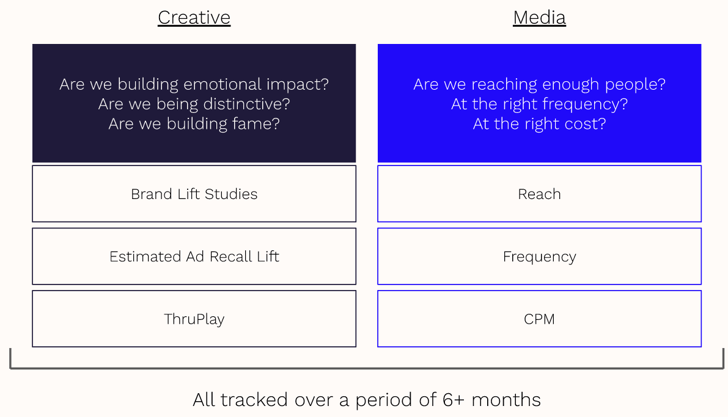
Not follows, engagements or micro-targeting but the frequency, multiple platforms and a fair split of the budget between brand and sales does it. And, of course, measure it through.
With regards to the creative part, especially Instagram Stories, there are some quick pointers here, on how to stand out or at least see state-of-the-art Story ads. Stories really should be the new carousel ads I still get to see in every creative agency deck for social.
Snap shared its Q1 2020 numbers. More users esp. in rest of the world (Global 20% yoy), and more revenue esp. in Europe (Global 44% yoy).
Strategically, Snap is doubling-down on DR advertisers (introducing ROAS bidding for instance), who now represent more than half of its revenue. Anecdotally I call this the porn strategy. When porn made VHS a success even though Video 2000 was the technically better system, Snap hopes that DR advertising, product porn, will do the same for them. While conversion rates tend to be lower than elsewhere, CPCs come in at a quarter of what is to be had on Facebook so you are still netting out.
Further to that, Snap is launching the mass reach format First Commercial for brands to be - you guessed it - the first commercial any user sees within the first Snap show they watch that day. That makes sense as Snap’s Discover video platform shows even stronger growth than its user base. Snapchat has 11m users in Germany.
As for Facebook’s Q1 2020 numbers, monthly active users (MAU in Millions) grew 10% yoy:
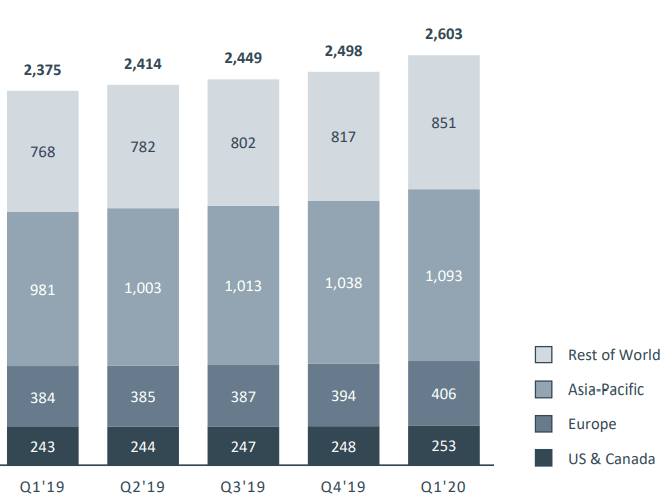
With 67% of MAUs logging in daily, up from 66%. Facebook is now reporting Family Active Daily/Monthly People as well, including Messenger, Whatsapp and Instagram and peaks at 2.99 Billion users across its family of apps, with a DAP/MAP-ratio of 79%. Q2/2020 numbers will surely be less impressive - but I’ve thought this many times.
Pixel/Cookie-tracking is dying and like it or not, server-side tracking is here to stay and making advertising even more technical. Safari, Chrome, Firefox, Brave are all pulling the plug on cookies/Javascript-tracking, so if you want to limit unmeasurable events, i.e. between 20 and 50% of all website events depending on target audience, you should look into server-side tracking. Facebook already offers an API to plug in your server-side infra, Pinterest and Google have a product lined up for Q3/Q4. What it is? This:
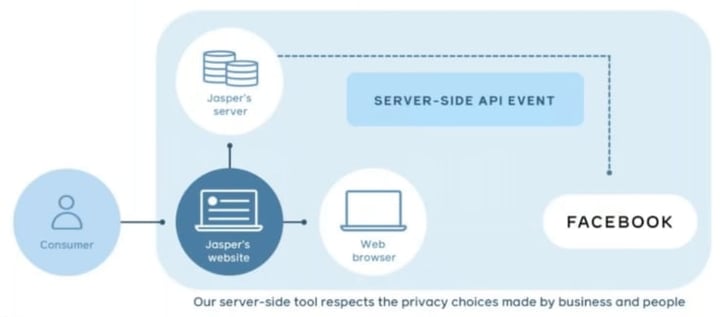
Advantages are:
Control. Own the data and avoid black boxes.
Adaptability. Combine multiple touchpoints, e.g. send and use off-site events from call center bookings for instance, or computed values like lead scores.
Reliability and security. Reduce page loads times and 3rd-party-code on websites.
You can start with an AWS setup from Kinesis Firehose to Lambda and S3 or go through Azure or Apache Pulsar depending on your existing tech stack. Should you maintain this in-house or plugin a turnkey provider? For larger corps the TCO will be lower if maintaining this in-house, smaller businesses (i.e. less traffic/events) should go with turnkey solutions like Mixpanel, Segment or Tealium.
As a Facebook Marketing Partner for Technical Services, I can help with the Facebook part.
When working with start-ups to help them lay a strong data foundation and scale their advertising, I’ve seen on more than one occasion a tendency to overdo things. Too many campaigns, too many audiences, and too many ideas. I totally sympathise with that - there are many options in ads manager and sometimes you may find some random combination of parameters that works really well - you never know, right?
I’ve found the following summary worthwhile to read up on how the different parts of the advertising system come together: Facebook Advertising Decoded in 15 Minutes
Even if you are only superficially interested. Most of it holds true for any other social platform.
P.S. Every TVC is the same right now.
Share this article
Increase the success of start-ups with Conversion Rate Optimization (CRO). Optimize landing pages...
Advantage+ is Meta's major automation update for Instagram and Facebook Ads.
Meta's Conversion API is the standard for browser-independent conversion tracking. As adblockers...